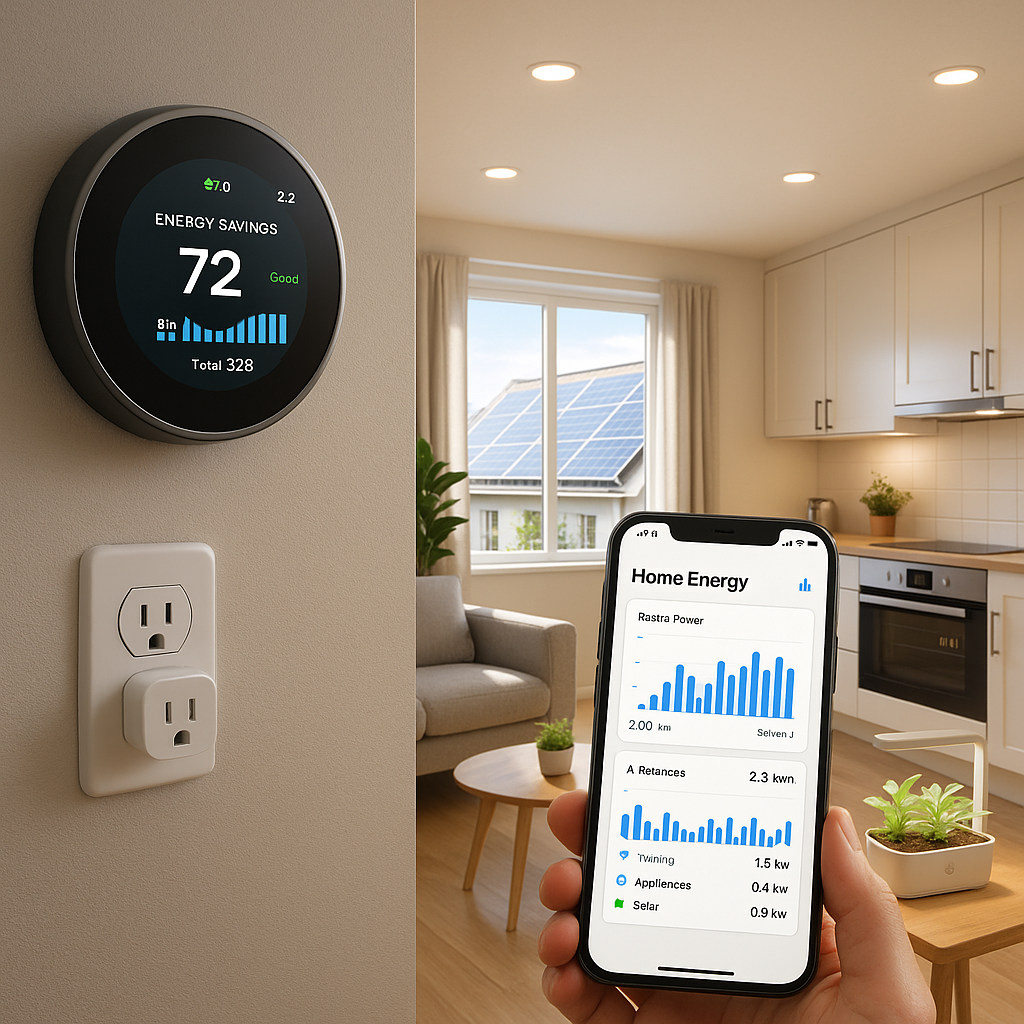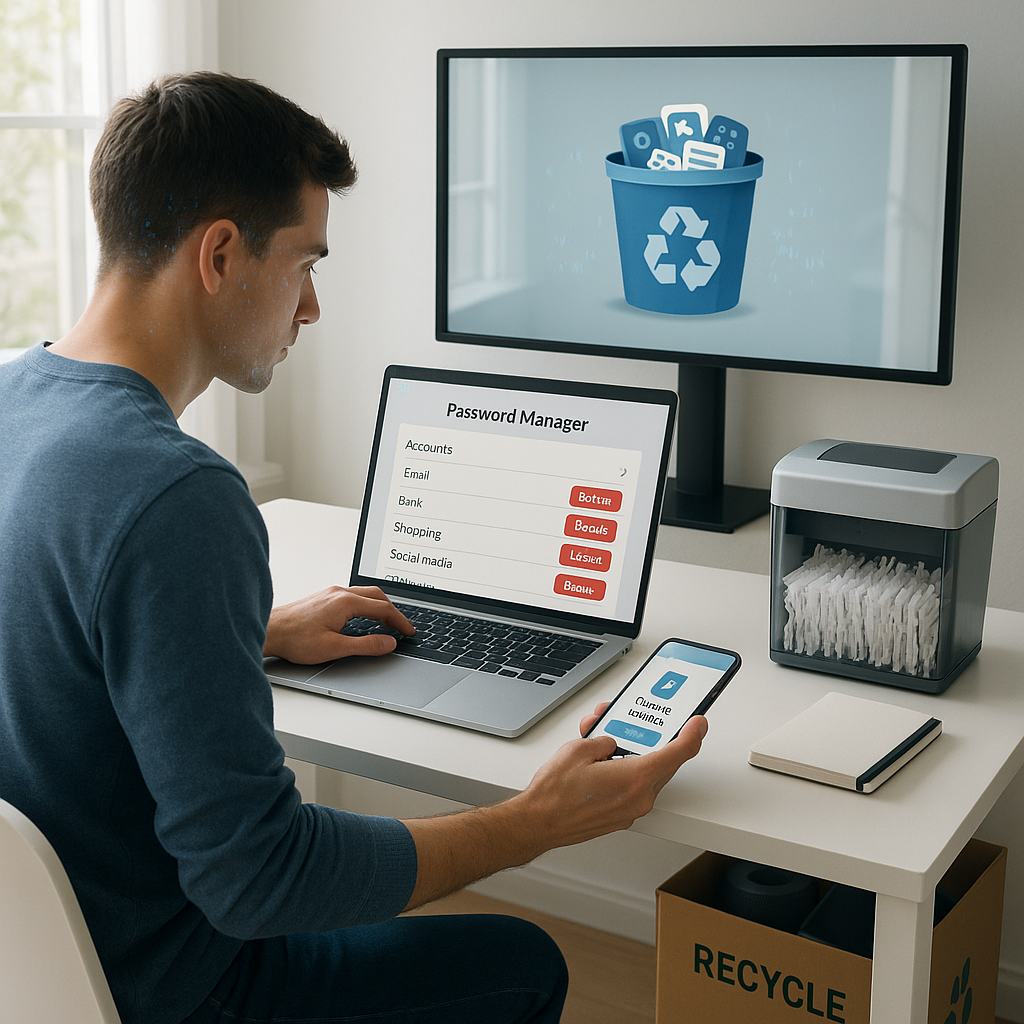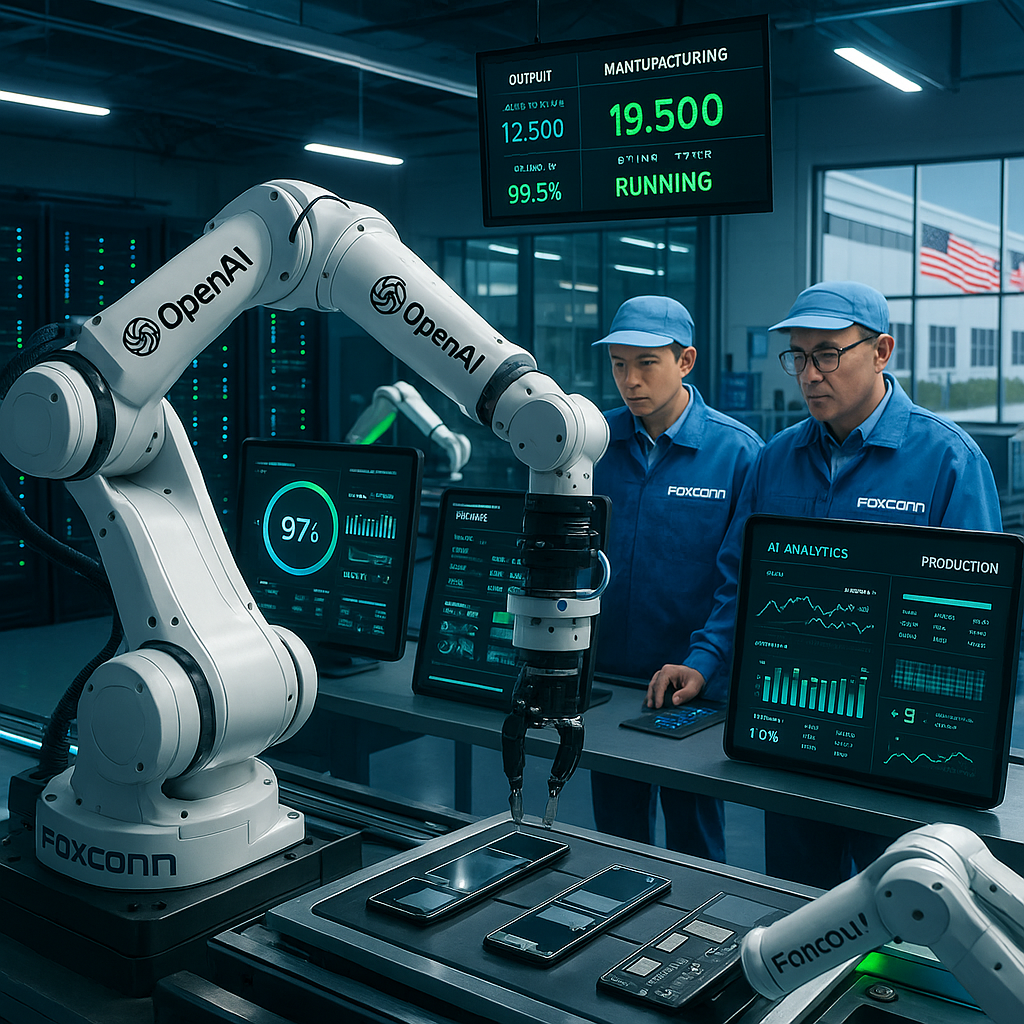Key Takeaways
- Eco gadgets are transforming daily living by combining smart home technology with sustainable practices. As households increasingly prioritize energy savings and green technology, recent innovations allow for significant cost reduction and minimized environmental impact without compromising convenience.
- Smart thermostats reduce energy waste automatically. Advanced thermostats learn your schedule, adjust temperatures on demand, and cut heating and cooling bills while shrinking your carbon footprint.
- LED lighting systems deliver bright, efficient illumination. Energy-saving LED bulbs and smart lighting controls decrease electricity use, outlast traditional bulbs, and adapt to your routines for optimal efficiency.
- Connected plugs and outlets stop phantom energy loss. Smart plugs empower you to remotely shut down idle devices, eliminating hidden energy usage that quietly adds up.
- Intelligent appliances enable greener living. Eco-friendly washing machines, dishwashers, and refrigerators use smart sensors and scheduling to maximize efficiency, saving both water and electricity.
- Home energy monitors provide actionable insights. Real-time monitoring tools pinpoint where energy is used the most, helping you make smarter choices to improve efficiency and save money.
- Solar-powered gadgets unlock off-grid potential. Solar panels and portable solar chargers offer clean, renewable energy for everything from smart locks to garden lights, increasing home independence and sustainability.
- Automated irrigation systems conserve water. Smart sprinklers schedule watering based on real-time weather and soil data, maintaining healthy gardens while minimizing water use.
- Seamless integration simplifies sustainable living. Modern eco gadgets work together, connecting lighting, climate, and appliances to foster habits that are energy-efficient with minimal ongoing effort.
By incorporating these innovative eco gadgets, you can transform any home into a smarter, greener environment. One that balances energy savings with everyday comfort. Discover the top smart tech picks and easy strategies to make sustainable living both practical and enjoyable.
Introduction
Wasted energy often lurks unnoticed in our homes, silently raising utility bills and reducing the potential for sustainability. Fortunately, the new generation of eco gadgets is bridging smart home innovation with green technology, making it easier to cut energy consumption without complexity or inconvenience.
Today’s smart thermostats, LED lighting systems, and connected outlets do more than automate daily routines. They empower you to save energy, embrace sustainable living, and maintain modern convenience all at once. From robust solar-powered devices to precise home energy monitors, converting your living space into an efficient, eco-conscious sanctuary is now within everyone’s reach.
Let’s explore how combining the smartest technology with straightforward strategies can make sustainable living second nature.
Un passo avanti. Sempre.
Unisciti al nostro canale Telegram per ricevere
aggiornamenti mirati, notizie selezionate e contenuti che fanno davvero la differenza.
Zero distrazioni, solo ciò che conta.
 Entra nel Canale
Entra nel Canale
The Role of Eco Gadgets in Modern Smart Homes
While smart home technology once focused mainly on comfort and automation, it now serves as a vital tool for promoting sustainability. Eco gadgets intelligently merge automation with energy and water efficiency to create homes that are advanced, responsive, and environmentally responsible. These devices work in harmony, driving down energy usage, minimizing waste, and offering actionable insights into your consumption patterns.
For homeowners, the benefits are tangible. Studies indicate that connected homes can reduce energy use by 10-30% on average. Additionally, eco gadgets grant greater control over how you manage resources, with real-time data and automated optimization that make efficiency intuitive.
Smart Thermostats
Smart thermostats are setting new standards in home climate control, leveraging automation and artificial intelligence to deliver both comfort and savings. Leading options such as the Nest Learning Thermostat and ecobee SmartThermostat include a host of features that can reduce heating and cooling costs by 15-23% each year.
Key Features and Benefits
- AI-powered scheduling that learns your family’s habits and adjusts temperatures automatically
- Occupancy detection that optimizes comfort when rooms are in use and saves energy when they aren’t
- Weather integration that adapts to outdoor conditions for improved efficiency
- Zone control for personalized comfort in different parts of the home
Real-world data shows that users typically save $131 to $145 annually on heating and cooling. Most homeowners recoup their investment within two years, making it a fiscally and environmentally smart upgrade.
If you’re considering this upgrade, you might want to check these practical tips in home automation on budget.
LED Lighting Systems
LED lighting systems are at the forefront of energy-efficient home illumination. Modern LEDs use up to 90% less energy than incandescent bulbs and can last 15-25 times longer, significantly reducing both energy costs and waste.
Smart Lighting Capabilities
- Automated schedules that adjust lighting throughout the day or when rooms are occupied
- Color temperature controls to promote healthier circadian rhythms
- Seamless integration with security and motion sensors for smarter, safer lighting
- Remote management via smartphone apps for effortless adjustments
By switching to smart LED lighting, a typical household can save around $225 annually. Automated dimming and scheduling features provide additional savings and customization to suit daily routines.
For more practical ways to repurpose tech in your home, explore reuse your old phone as a smart home device.
Smart Plugs and Outlets
Hidden energy consumption, often referred to as phantom power, can account for up to 10% of household electricity use. Smart plugs and outlets give you granular control over individual devices, helping you target and reduce this waste.
Strategic Implementation
- Prioritize high-draw devices, such as entertainment centers and home office equipment
- Use for seasonal electronics, including holiday lights and portable air conditioners
- Schedule regular-use appliances, like coffee makers or slow cookers, to turn off when not needed
By strategically deploying smart plugs, users often report 5-10% reductions in overall energy bills. Some achieve even greater savings through careful monitoring and scheduling.
To secure your smart setup, don’t miss these smart home security tips that help protect your devices.
Intelligent Appliance Management
Smart appliances take efficiency a step further with built-in connectivity and adaptive features. Energy Star-certified models can reduce household energy use by 10-50% compared to standard appliances.
Smart Features That Matter
- Avoid peak-time energy rates with scheduling to run cycles when electricity costs are lowest
- Receive maintenance alerts to keep appliances running efficiently and prevent costly breakdowns
- Access remote diagnostics that identify problems before they lead to higher consumption or performance issues
- Optimize usage automatically by adjusting wash or cooling cycles to suit actual needs
These intelligent systems can be found in modern washing machines, dishwashers, refrigerators, and even ovens. Helping streamline home maintenance while advancing sustainability.
Home Energy Monitors
Whole-home energy monitoring tools offer unmatched transparency into household power consumption. By revealing real-time data and providing actionable insights, these devices empower homeowners to fine-tune their energy use.
Monitoring Benefits
- Real-time tracking for immediate feedback on energy consumption
- Device-level detail that highlights which appliances use the most power
- Recognize consumption patterns that reveal scheduling or behavioral changes to improve efficiency
- Set goals and measure progress in achieving long-term sustainability targets
Often, users discover opportunities for 5-15% immediate savings just through the insights provided by home energy monitors, with further gains possible through informed tweaks.
Solar-Powered Gadgets
Solar technology is now accessible to more households, whether through large-scale rooftop installations or portable gadgets. Solar-powered devices deliver clean, renewable energy for diverse home applications.
Un passo avanti. Sempre.
Unisciti al nostro canale Telegram per ricevere
aggiornamenti mirati, notizie selezionate e contenuti che fanno davvero la differenza.
Zero distrazioni, solo ciò che conta.
 Entra nel Canale
Entra nel Canale
Popular Applications
- Outdoor lighting solutions for security and landscape ambiance
- Solar-powered charging stations for phones, tablets, or emergency radios
- Environmental sensors, such as weather stations and garden moisture monitors
- Small appliances, like attic fans, fountains, or greenhouse ventilation systems
These solar-powered solutions are increasingly found in educational settings, healthcare clinics, and retail, demonstrating their broad utility.
Looking to level up your sustainable lifestyle? See how the circular tech economy extends device lifespan for even more impact.
Automated Irrigation Systems
Efficient water use is crucial for sustainable homes. Smart irrigation controllers optimize garden and landscape watering, minimizing waste and supporting healthy plant growth.
Smart Watering Features
- Integrate weather monitoring to automatically adjust watering based on rainfall and forecasts
- Soil moisture sensors provide water on demand. Never more than necessary.
- Flow monitoring detects leaks early and prevents wasteful runoff
- Zone-specific control tailors watering schedules to different plant types and sunlight conditions
This technology is also making waves in commercial agriculture, schools, and municipal landscaping projects, offering broad benefits for water conservation.
Seamless Integration
An eco-friendly smart home achieves its full potential when systems are integrated thoughtfully. Platforms like Apple HomeKit, Google Home, and Samsung SmartThings unite diverse gadgets under one interface, creating a single hub for efficient management.
Integration Considerations
- Ensure protocol compatibility so these devices communicate without costly gaps or overlaps
- Design automation scenarios that link lighting, climate, and appliances for holistic savings
- Plan for backup power and connectivity to ensure systems keep running during outages
- Select scalable platforms so your smart eco-home can easily grow with future needs
Beyond households, seamless integration benefits commercial office spaces, schools, and healthcare facilities.
Simple Strategies
Transitioning to an eco-friendly smart home can start small. Focus on initial, high-impact upgrades that are easy to set up and provide quick returns, then expand as your needs and budget allow.
Getting Started
- Choose devices with proven return on investment, such as smart thermostats and LED lighting
- Build out your ecosystem gradually, prioritizing devices that solve the biggest issues first
- Continuously monitor your results to validate savings and identify further opportunities
- Take advantage of rebates and incentives from local utilities or government programs to lower upfront costs
Applying these principles is equally effective in small businesses, schools, and multi-family residences, supporting broader adoption of sustainable smart technology.
For more guidance on building your tech ecosystem efficiently, view this digital starter kit for new tech users.
Conclusion
Eco gadgets are redefining the modern smart home, offering an intersection of convenience, sustainability, and significant cost savings. From intelligent thermostats and automated lighting to solar-powered devices and comprehensive energy monitors, each innovation delivers measurable benefits across diverse sectors, including residential, educational, commercial, and municipal environments. Integrating these tools thoughtfully ensures your home, classroom, or business operates efficiently, reducing both energy and water usage for a tangible environmental impact.
The true power of eco-smart technology is its accessibility for everyone. By starting with impactful, proven upgrades and scaling intentionally, individuals and organizations can create spaces that are responsive, resilient, and future-ready. As the digital and sustainable living trends converge, adopting eco gadgets shifts from a passing trend to an essential strategy for anyone aiming to cut costs, lower their carbon footprint, and embrace smarter living.
Looking ahead, those who prioritize adaptability and data-driven decisions will be best positioned to thrive in a resource-conscious world. Whether you are outfitting a family home, running a small business, or upgrading educational environments, the question is no longer if you’ll adopt sustainable smart tech. What will really matter is how you will leverage it to build a greener, more efficient future starting today.





Leave a Reply